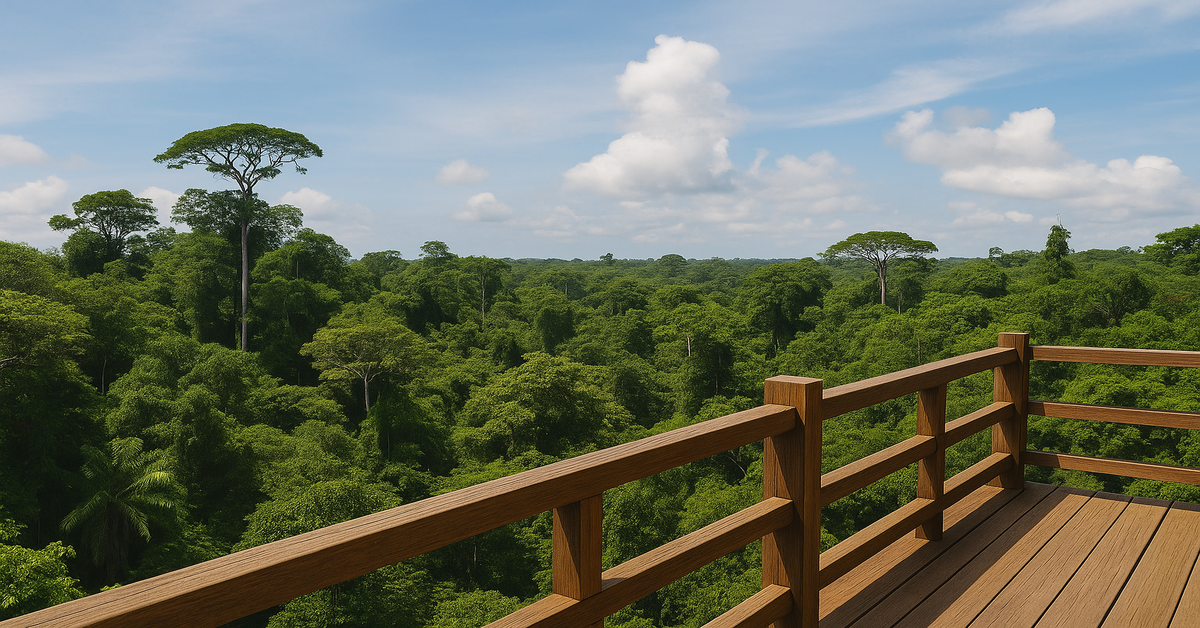
Forests are among the world’s most valuable natural resources, offering oxygen, biodiversity, timber, water regulation, and cultural meaning. However, they are under constant pressure from human activity—deforestation, agriculture expansion, industrialization, and climate change. To address these challenges, many countries have established Forestry Development Authorities (FDA) or equivalent agencies. These bodies serve as the primary stewards of national forest resources, balancing conservation with economic use, and ensuring that forests remain sustainable for future generations.
This article provides a comprehensive exploration of the Forestry Development Authority (FDA). It examines its functions, historical evolution, organizational structure, roles in conservation, contributions to livelihoods, challenges, policy strategies, and the future of forestry management. Whether you are a student, policymaker, environmentalist, or simply curious about forest governance, this deep dive will clarify why such an authority is critical in today’s environmental and socio-economic landscape.
1. Defining the Forestry Development Authority
The Forestry Development Authority is a government-established body responsible for the management, protection, development, and sustainable use of forests and related resources. While names and organizational models differ between countries, the term “Forestry Development Authority” generally refers to a central institution that:
- Creates and enforces forestry laws.
- Manages national parks, reserves, and protected areas.
- Issues permits and licenses for logging or forest product harvesting.
- Oversees reforestation, afforestation, and forest regeneration projects.
- Works with local communities to integrate sustainable practices.
- Conducts research and monitors forest conditions.
In essence, the FDA is the bridge between forests, governments, and people—balancing conservation goals with economic needs.
2. Historical Evolution of Forestry Authorities
The idea of a Forestry Development Authority can be traced to colonial forest departments in the 19th and early 20th centuries. Many countries created forest offices to regulate timber exploitation for revenue. Over time, however, the perception of forests shifted: instead of being merely sources of wood, they were recognized as ecosystems with social, ecological, and climate value.
- Early Period (1900s): Focus on timber extraction and land control.
- Mid-20th Century: Introduction of national forest services to manage resources more holistically.
- Late 20th Century: Emergence of environmental awareness—forests linked to biodiversity, carbon storage, indigenous rights.
- 21st Century: Establishment of modern Forestry Development Authorities to implement sustainable forest management, integrate global conventions (e.g., UN-REDD, Paris Climate Agreement), and engage in participatory approaches.
3. Core Functions of the Forestry Development Authority
The FDA is tasked with multiple responsibilities. These functions can be categorized as follows:
| Function | Description |
|---|---|
| Regulation | Drafting, implementing, and enforcing forestry laws, licenses, and penalties. |
| Protection | Safeguarding forests against illegal logging, wildfires, and encroachment. |
| Management | Administering forest lands, reserves, and concessions. |
| Development | Promoting afforestation, reforestation, and sustainable use of resources. |
| Research & Monitoring | Collecting data on forest health, biodiversity, and carbon storage. |
| Community Engagement | Collaborating with local people, providing education, and promoting alternative livelihoods. |
| International Cooperation | Working with global organizations on climate and biodiversity goals. |
4. Organizational Structure
A typical Forestry Development Authority consists of several departments:
- Board of Directors / Executive Council: Strategic oversight and policy-making.
- Department of Forest Management: Oversees land use, forest inventory, and allocation.
- Department of Conservation: Responsible for national parks, reserves, and biodiversity.
- Department of Commercial Forestry: Manages logging concessions, permits, and timber industry relations.
- Department of Research & Extension: Conducts forestry studies, innovations, and educational outreach.
- Department of Community Forestry: Focuses on empowering local communities and indigenous groups.
- Finance and Administration: Handles budgets, audits, and staff welfare.
This structure ensures that forest issues are addressed from multiple angles: conservation, commercial use, community needs, and scientific research.
5. The Role of FDA in Forest Conservation
One of the most vital roles of the FDA is conservation. Forests are biodiversity hotspots, and their degradation affects countless species. FDA conservation roles include:
- Creating and managing protected areas such as national parks, game reserves, and sanctuaries.
- Implementing anti-poaching patrols and monitoring endangered wildlife.
- Regulating land conversion and agricultural encroachment.
- Developing conservation education programs for schools and communities.
- Partnering with NGOs to restore degraded landscapes.
6. FDA and Sustainable Economic Development
While conservation is crucial, forests are also economic resources. The FDA ensures sustainable forestry, where timber and non-timber products are harvested without depleting the ecosystem.
Key Economic Roles:
- Timber Industry Regulation: Issuing logging licenses, setting quotas, enforcing sustainable practices.
- Non-Timber Forest Products (NTFPs): Promoting use of honey, resins, rattan, fruits, and medicinal plants.
- Eco-Tourism: Developing parks and reserves for tourism revenue while promoting conservation.
- Carbon Credits: Participating in carbon trading markets through REDD+ programs.
This dual role ensures that forests continue to contribute to national economies while remaining sustainable.
7. FDA and Local Communities
Communities are the frontline users of forests. The FDA works with them to:
- Establish community forestry programs, granting locals rights to manage and benefit from forest areas.
- Provide alternative livelihoods such as beekeeping, mushroom cultivation, or eco-tourism jobs.
- Conduct training programs on sustainable farming and forest management.
- Empower indigenous groups by recognizing their traditional knowledge and land rights.
8. Challenges Facing Forestry Development Authorities
Despite their importance, FDAs face numerous challenges:
- Illegal Logging: Rampant in many regions, driven by high demand for timber.
- Weak Enforcement: Limited staff and resources hinder patrols and monitoring.
- Corruption: In some countries, concessions are granted without transparency.
- Deforestation Pressures: Expanding agriculture, mining, and infrastructure projects.
- Climate Change: Wildfires, pests, and diseases increasingly threaten forests.
- Funding Constraints: Many FDAs rely on limited government budgets or donor aid.
- Conflicts with Communities: If not inclusive, FDAs can face resistance from locals.
9. Success Stories and Best Practices
Some FDAs have achieved notable successes:
- Community Forests in Nepal: Though not called FDA, similar authorities promoted community forest user groups that successfully restored degraded lands Forestry Development Authority.
- Liberia’s FDA: Implemented logging moratoriums to address corruption and engaged in sustainable forestry certification.
- Costa Rica’s Forestry Agency: Helped the country achieve net forest growth through payment for ecosystem services.
These examples show that with proper governance, FDAs can reverse deforestation trends.
10. Policy Frameworks and International Cooperation
FDAs do not work in isolation; they align with global policies:
- UN-REDD Program: Supports reducing emissions from deforestation and degradation.
- Convention on Biological Diversity (CBD): Guides biodiversity conservation.
- Paris Agreement: Encourages countries to use forests in climate mitigation.
- CITES: Regulates trade in endangered species like rosewood or mahogany.
By engaging in these frameworks, FDAs integrate local action with global goals Forestry Development Authority.
11. Future Directions for Forestry Development Authorities
The future of FDAs will likely involve:
- Digital Transformation: Using drones, satellites, and AI for forest monitoring.
- Climate-Smart Forestry: Integrating carbon storage into forest management.
- Youth Engagement: Involving younger generations in conservation.
- Private Sector Partnerships: Engaging industries in corporate social responsibility (CSR) forestry projects.
- Stronger Legal Frameworks: Tackling corruption and ensuring transparency.
12. Comparative Table: Traditional vs. Modern FDAs
| Aspect | Traditional FDA | Modern FDA |
|---|---|---|
| Primary Role | Timber control | Sustainable development |
| Community Role | Minimal involvement | High participation |
| Technology Use | Manual, limited | Digital tools, satellites |
| Policy Focus | Revenue generation | Climate and biodiversity |
| Funding | State budgets only | Donors, carbon finance, CSR |
13. Conclusion
The Forestry Development Authority plays a pivotal role in ensuring that forests—vital to the survival of humanity—are preserved, managed, and used sustainably. From issuing logging permits to protecting endangered species, from involving local communities to engaging in international climate agreements, the FDA is at the center of environmental governance.
Challenges such as illegal logging, weak funding, and climate change remain, but with innovation, transparency, and inclusive participation, the Forestry Development Authority can lead societies toward a more balanced relationship with nature.
In short, the future of Forestry Development Authority—and by extension, the health of our planet—rests heavily on how effectively FDAs carry out their mandates today.
FAQs
1. What is the Forestry Development Authority?
It is a government body responsible for managing, protecting, and sustainably developing forests and forest resources.
2. Why is the Forestry Development Authority important?
It ensures forests provide ecological, economic, and social benefits while preserving biodiversity and combating deforestation.
3. How does the FDA work with local communities?
By establishing community forestry programs, providing livelihoods, and recognizing traditional knowledge and rights.
4. What are the biggest challenges for FDAs?
Illegal logging, corruption, climate change, underfunding, and conflicts with land-use demands are major obstacles.
5. What is the future of Forestry Development Authorities?
They will increasingly use technology, climate-smart practices, and global partnerships to strengthen sustainable forest governance.






